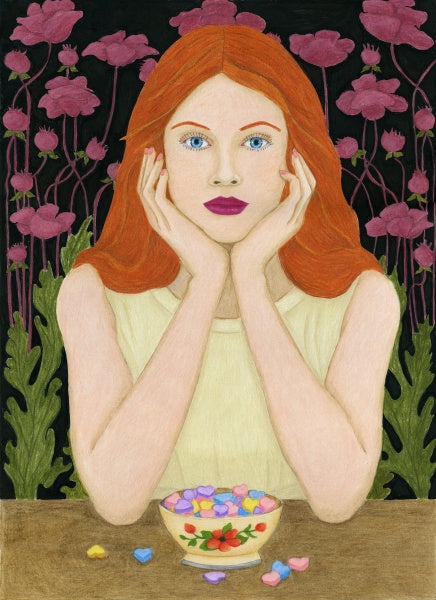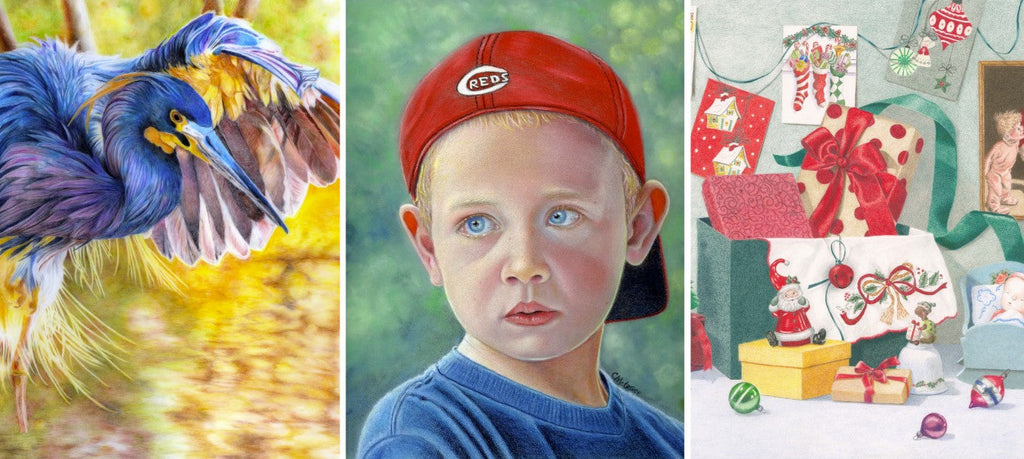I May Only Imply
by Thomas Sciacca
As a professional illustrator since 1984, my job was (and is) to be an effective communicator. To create images that catch and hold the attention of readers and viewers, while conveying some clear message related to the article, book, show, or product. The more I’ve done this, the greater my appreciation for communicating clearly and directly, with as little information as possible. Showing only the relevant information, in ways appealing and inviting. Naturally, I am capable of great amounts of detail, and complexity—the type of complexity which works in a context when viewers have time to spend with such an image. When asked to design a poster, or book cover, I look to simplicity. To come up with perhaps, a single element image, aiming at high impact-something which viewers may easily remember, long after they’ve seen it. With any of my work, comes the question, ‘how much detail is necessary?’ I ask this based on the project, but in broader terms, I consider what all that I want my work to convey.

Night Terrace
My approach with any project, is to establish an emotional/psychological climate. I reach for specific music to listen to, related to that climate, or mood. This with color, and how my subjects are placed within the composition. While there may be descriptive details necessary to the subject, I prefer not to allow detail to call too much attention to itself. I likewise prefer not to call attention to technique(s). Whatever all I put into the picture, it is all there to support the greater emotional mood.
“With any of my work, comes the question, ‘how much detail is necessary?’”
The artists who I’ve spent time with, caught my attention for what they showed-and as importantly, for what they left out. Edward Hopper showed houses, and city buildings. So much of his work dealt with isolation, and private moments of his human subjects. His buildings never showed brick patterns, his figures were never painted with literal clarity. I accept what he portrayed as accurate, and powerful, more so because of so many details. I think the same of Italian Surrealist painter Giorgio de Chirico, and Modernist painter Mario Sironi. Like Hopper, these artists used architecture, color, and compositional devices to evoke powerful emotions.

Leviathan
I may call these devices and effects ‘sublime’, as they are not as easily tangible as work which emphasizes more literal if not photographic quality.
If I could sum these thoughts up into a single premise, it would be that there is great power in implication. For when there is room left for a viewer to participate, a greater relation may take place.
I have rarely been asked by so many clients to portray subjects which include some of the more unfortunate aspects of my personal life. Areas, or events which are by no means unique to me. By this, I refer to separation, and loss of loved ones. The events which get dealt with and lived with separate from jobs, and professional concerns. To be an artist was, and is, to be able to express these areas, whether the work gets put into a professional context or not. It’s an easier thing, to gather reference materials, deal with type, make physical measurements, quote prices, all related to a job. It is another matter, to come up with ways to express experiences which can not be measured by numbers, rulers, or computers. For me, it is a greater challenge, because, the ‘content’, emotional and psychological as it may be, can not be photographed. No technology exists, to capture or measure matters of a greater human nature. Matters of the heart, the spirit.

Entrance to Altars
“Whatever all I put into the picture, it is all there to support the greater emotional mood.”
One current series of mine deals with losses within my family-and the spiritual relief that I sought and found during those losses. Expressing such matters in pictures, would not be possible-I have no photos of the events, nor the people. I would not be able to include so much of the details related to loved ones in pictures. What I have attempted to do, is imply the states of mind—the best, and worst—through depictions of city streets. The reference photos of the streets exists—what I bring to the scenes, is what takes them beyond literal depictions. It becomes enough for me to use color, shapes, composition, and design, to tell the story. The details, I disclude. The greater moods I believe are what any viewer can relate to. Naturally, the buildings show no bricks; windows are implied, sometimes absent. A figure will appear minus detail. If anything, the figure will be small compared with the greater forces and dynamics shown through the buildings.
Ultimately, what is left out is what the viewer brings to the picture. As the psychological content is universal, I trust that the viewers can connect their own emotions to what I may need only imply.
ABOUT Thomas Sciacca
Thomas Sciacca is a 1985 graduate of The School of Visual Arts in NYC. He began his freelance illustration career in 1984. Since then, Sciacca has produced images for many major newspapers, magazines, and book publishers. Additionally, he has taught college level art courses, and has worked extensively as a scenic designer and painter for theatre.
See more at: https://www.redbubble.com/people/thomassciacca/shop





Comments (1)
Your art fills me with a Art Deco or 20-30s flavor but with your stamp. Distinctive style and so pleasing visually and creative.
Mireille - Nov 28, 2020Love it!